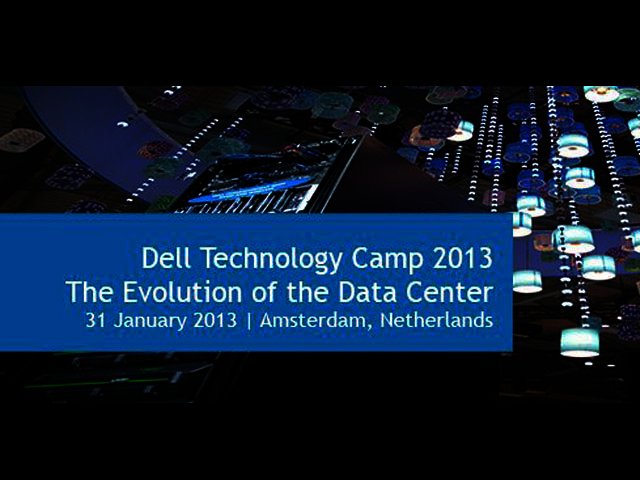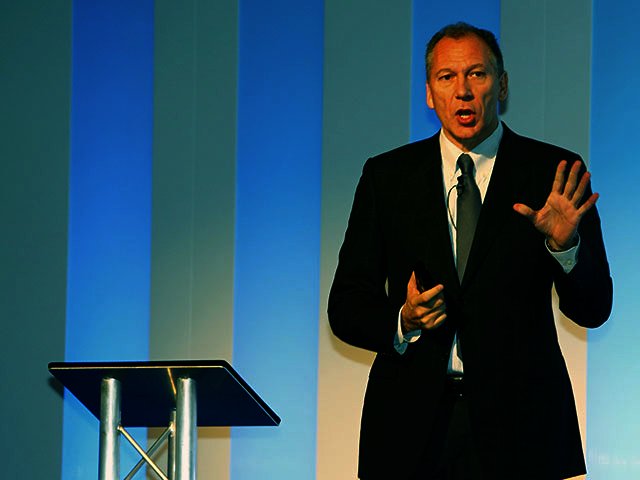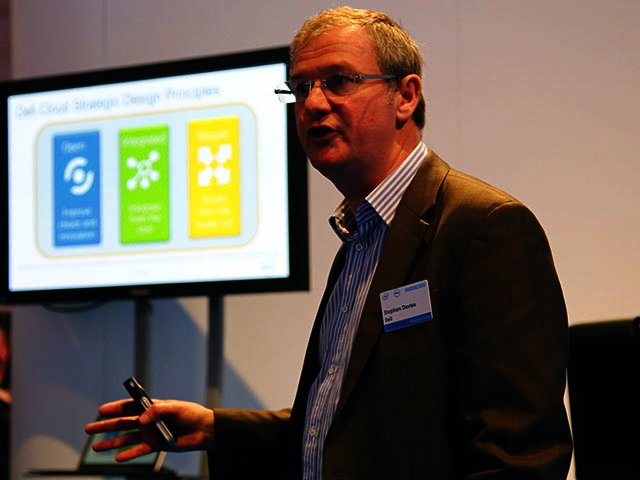PREVIOUS ARTICLENEXT ARTICLE
NEWS

Dell Technology Camp 2013 Part 2
By Ryan Noik 13 February 2013 | Categories: news
At Dell’s Technology Camp 2013, which TechSmart attended at the invitation of Dell South Africa, the company provided an overview of its strategy as well as why customers were foremost on its priority list (see part 1).
Beyond this though, another major theme of the conference focused on workload-centric IT infrastructure, a development which Forrester Research has cited as being the future for technology deployment models.
The research company argued that IT infrastructure should become workload-centric, whereby organisations would design the server, storage, and networks in their data centre on what matters most (a company’s workloads). This is contrary to the old approach, whereby company’s would acquire IT infrastructure in anticipation of what they might need in the future to meet their server, storage and networking needs.
These separate components, or silo’s in IT lingo, were largely regarded as separate entities, even though they needed to work together. Indeed, there is a strong move towards integrating servers, storage, and networks in a more cohesive manner, which is known as converged infrastructure.
Now, for an announcement
Beyond this though, another major theme of the conference focused on workload-centric IT infrastructure, a development which Forrester Research has cited as being the future for technology deployment models.
The research company argued that IT infrastructure should become workload-centric, whereby organisations would design the server, storage, and networks in their data centre on what matters most (a company’s workloads). This is contrary to the old approach, whereby company’s would acquire IT infrastructure in anticipation of what they might need in the future to meet their server, storage and networking needs.
These separate components, or silo’s in IT lingo, were largely regarded as separate entities, even though they needed to work together. Indeed, there is a strong move towards integrating servers, storage, and networks in a more cohesive manner, which is known as converged infrastructure.
Now, for an announcement
To this end, Dell made two particular announcements of interest to IT professionals. The first entails new workload-optimised solutions for the SAP HANA platform that enable customers to deploy Dell server, storage and networking systems running SAP HANA.
The company explained that these pre-integrated systems are based on the same architecture employed in Dell’s single-server appliance, and boast configurations that scale from one terabyte to more than four terabytes.
In a nutshell though, Dell explained that the SAP HANA solutions are intended to enable customers to run and deploy business-critical applications and effectively meet their workloads.
Also announced was the company’s new Active System Manager 7.0, the management layer for Active System, which is Dell’s answer to converged infrastructure. The company explained that the new offering, which is notable for integrating intellectual property from one of Dell’s strategic acquisitions, Gale Technologies, enables users to rapidly deploy business applications and IT services.
The company explained that these pre-integrated systems are based on the same architecture employed in Dell’s single-server appliance, and boast configurations that scale from one terabyte to more than four terabytes.
In a nutshell though, Dell explained that the SAP HANA solutions are intended to enable customers to run and deploy business-critical applications and effectively meet their workloads.
Also announced was the company’s new Active System Manager 7.0, the management layer for Active System, which is Dell’s answer to converged infrastructure. The company explained that the new offering, which is notable for integrating intellectual property from one of Dell’s strategic acquisitions, Gale Technologies, enables users to rapidly deploy business applications and IT services.

Dario Zamarian, the vice president and general manager of Dell’s Enterprise Systems and Solutions
It’s all about workloads
Dario Zamarian, the vice president and general manager of Dell’s Enterprise Systems and Solutions, explained the significance of the new announcements, elaborating that these will provide its customers with the agility they need to implement the workloads that matter most to their business. This while lifting the financial burdens placed upon them by offering better total cost of ownership and lower operating expenses.
“Customers should focus on their business and the applications and workloads that will help them compete in today’s dynamic marketplace. This means using integrated infrastructure and solutions that are optimised for applications,” he continued.
Indeed, the main thrust of Dell’s argument during the course of the day was that businesses should be able to cater their IT expenditure according to their unique workloads, while still being able to effortlessly expand their infrastructure as and when needed.
This customisable, flexible and personalised approach to a business’s unique IT needs was quite reminiscent of Dell’s more personal approach to its customers in general, which the company stressed during the opening of the Technology Camp.

Stephen Davies, Dell's consulting services alliance manager.
Forecast: Cloudy, with a likelihood of progress
However, no conference on IT or data centres would have been complete without mention of the cloud, and on this front, Dell certainly obliged.
According to Stephen Davies, the consulting services alliance manager at Dell, cloud was far more than just another industry buzzword. Indeed, he noted that the view of and receptivity towards cloud technology were changing rapidly and profoundly.
Davies elaborated that, for example, chief information officers were increasingly realising that if they employ clouded solutions effectively, this would free them up to focus on their critical business concerns. Thus from a technology point of view, deploying at least some functions to the cloud was becoming more enticing.
However, he admitted that certain parts of what businesses do will always be considered sacred and thus continue to be kept in-house, rather than outsourced to any cloud service. This though only enforces the appeal of hybrid clouds, which combine on-premise or private clouds with other options.
Interestingly enough, Davies noted that while large corporations are grappling with what, and how much, of their IT functionality to obtain from the cloud, it’s a different story for start-ups.
He explained that several venture capital companies are requiring that the start-ups they fund revert to cloud technology from their inception, and don’t allow them to buy their own servers. Along with offering Dell’s desktop as a service, whereby Dell’s customers can buy, run and deploy virtual desktops off the company’s data centres, he reported that Dell was also doing “a huge amount of cloud consulting.”
.jpg)
Tim Dearborn, Dell’s industrial design strategist
The design and the details
In a hands-on workshop, Dell also explained that it is not just the hardware and the software that receives due diligence. Even the design of how its servers and products look and feel is carefully considered. Tim Dearborn, Dell’s industrial design strategist, explained that Dell server products are designed to embody professionalism, confidence, robustness and agility.
However, the design component is not just intended for aesthetic purposes. Dearborn explained that should a server go down and need to be replaced, each second could potentially cost a business in the order of $100 000. Thus server products have to be created so as to offer the quickest means of replacing faulty components for a very good - and financial - reason.
Additionally, small touches are also present, like a scannable QR code which provides comprehensive system information, along with detailed how-to videos for technicians. It is these seemingly minor details in fact, that showed how much thought is being put into Dell’s data centre advances.
To the point
However, the design component is not just intended for aesthetic purposes. Dearborn explained that should a server go down and need to be replaced, each second could potentially cost a business in the order of $100 000. Thus server products have to be created so as to offer the quickest means of replacing faulty components for a very good - and financial - reason.
Additionally, small touches are also present, like a scannable QR code which provides comprehensive system information, along with detailed how-to videos for technicians. It is these seemingly minor details in fact, that showed how much thought is being put into Dell’s data centre advances.
To the point
While the information provided at Dell’s Technology Camp, the demos we saw and the hands-on workshops were exhaustive, they were not exhausting. In fact, quite to the contrary, we walked away from a busy and buzzing event feeling like we had witnessed a company that had plenty to offer, and more importantly, was excited about moving forward.
It was little wonder then, that shortly after the Technology Camp concluded, Dell’s founder, Michael Dell confirmed that he was in fact taking the company private.
It was little wonder then, that shortly after the Technology Camp concluded, Dell’s founder, Michael Dell confirmed that he was in fact taking the company private.
Whether these changes could be called an evolution, revolution or just plain progress, Dell’s quiet message to other companies, both within and without the technology sphere, appeared to be that there is more to be gained from embracing change rather than fearing it.
USER COMMENTS
Most Read Articles
Read

Magazine Online
TechSmart.co.za is South Africa's leading magazine for tech product reviews, tech news, videos, tech specs and gadgets.
Start reading now >
Download latest issue
Have Your Say
What new tech or developments are you most anticipating this year?
New smartphone announcements (44 votes)
Technological breakthroughs (29 votes)
Launch of new consoles, or notebooks (14 votes)
Innovative Artificial Intelligence solutions (29 votes)
Biotechnology or medical advancements (24 votes)
Better business applications (160 votes)



